Can advertising industry crack its own biggest challenge?
Advertising, we have a problem, but we also have a solution. Could a new open brief clarion call signal the beginning of the end for this issue that has plagued the sector?
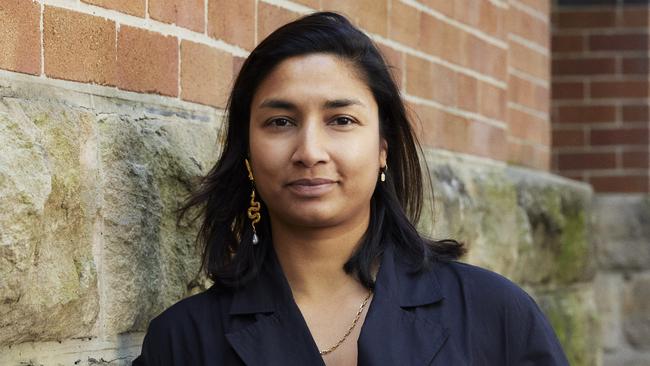
The advertising sector is calling on creatives from all corners of Australia to crack one of the biggest industry-shaping briefs yet – diversity and inclusion.
While the need for diversity in any industry is not new news, unlike most other industries media and advertising has the power to not only influence culture but also “shape the way we see one another”, according to ad agency BMF’s executive creative director Pia Chaudhuri.
Ms Chaudhuri, who is also co-founder of Only One In The Room, a collective formed last year to increase diversity in advertising, says with so much power to influence society, it is critical the sector is truly reflective of the people it is serving on the outside, on the inside.
While the diversity issues in such a lucrative industry – with the local Australian online advertising market alone recording a 22 per cent increase year-on-year to reach $13.9bn for the financial year ending June 2022 – are pervasive, change is ahead.
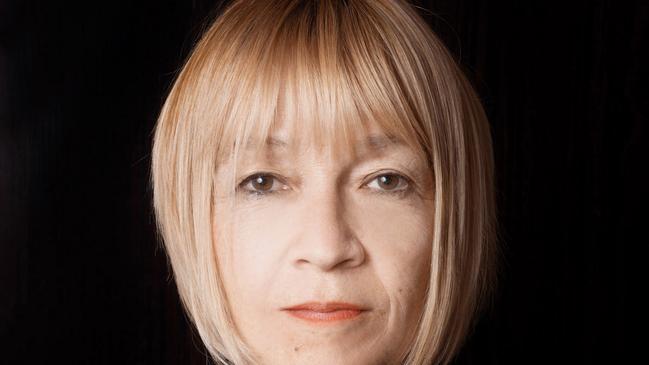
Ms Chaudhuri, whose agency has clients such as Aldi, the Australian government and Tourism Tasmania, agreed it can’t be solved by one person, organisation or one initiative alone but argues the Only One In The Room’s Destroy This Brief initiative launching on Monday will start to chip away at the many issues at hand.
The new initiative, which is supported by some of advertising’s most iconic names, including founder and CEO of MakeLoveNotPorn and diversity advocate Cindy Gallop, former Airbnb and Coke CMO Jonathan Mildenhall, and The Marketing Academy and London International Awards Global chair Terry Savage, acts as a clarion call to the industry to think of ways to create a more diverse advertising community.
“I love the fact that Only One In The Room’s brief is not calling for advertising ideas but for creative ways to dramatically transform industry conditions and mindsets,” Ms Gallop said.
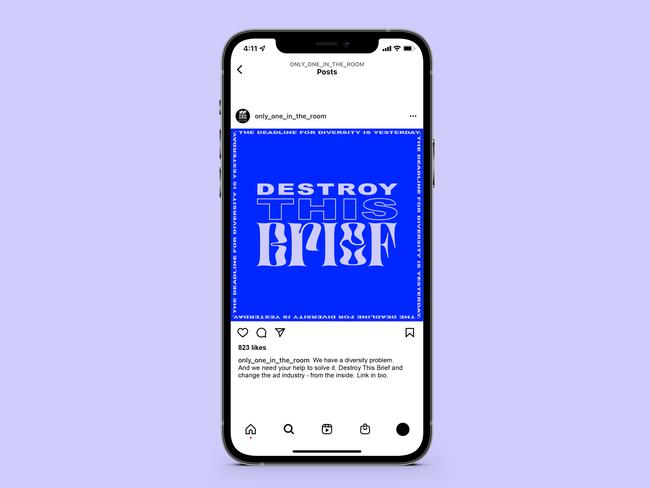
“It’s about time that an industry that claims to want equality, diversity and inclusion but is spectacularly failing to deliver on those claims, brings the full force of its creativity to bear on how to make change happen a damn sight faster.”
Releasing two briefs per year centred around a specific task within the diversity challenge, Destroy This Brief invites creatives, agencies, production companies, students – anyone involved in the industry – to respond with game-changing ideas.
“It could be digital platforms, regulation changes, new products, apps etc … whatever it takes to instigate real change,” Ms Chaudhuri said.
“And we’ll fund the best idea, or ideas, to happen, as judged by industry experts.”
With Only One In The Room founded on the belief that one day it will no longer need to exist, Ms Chaudhuri said the same went for Destroy This Brief. “We hope this is simply the beginning of the end,” she said.
As there’s currently a talent shortage across many industries, with the advertising sector guilty of specifically and continually “fishing in the same pond”, the first brief is focused on attracting diverse talent into the industry.
“It’s designed to take a problem as big and complex as the lack of diversity in our industry, break it up into smaller distinct themes, and articulate them in a way that’s more familiar and ‘crackable’ – the creative brief,” Ms Chaudhuri explained.
“After all, our industry is made up of smart, creative people who tackle our clients’ big and complex business challenges every single day. So why not use our skills to crack our own biggest challenges?”
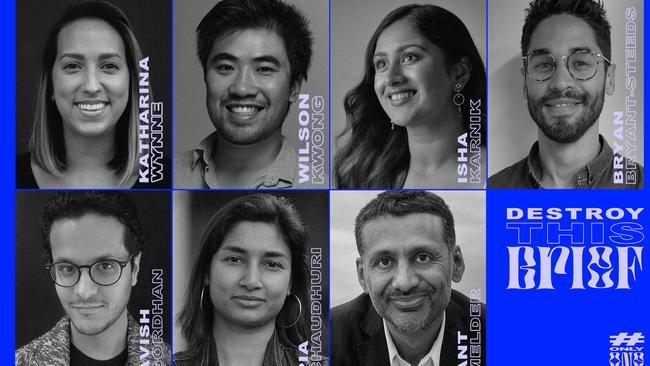
Comms about Destroy This Brief will roll out across PR and owned-media channels such as Instagram, LinkedIn, Twitter and Facebook.
The issue with a lack of diversity in a sector that is responsible for some of the nation’s biggest and most influential brand and government advertising campaigns is that if the people on the inside creating the work aren’t reflective of the audiences they target, this has a major impact on the output not being accurate, fair or representative.
“Without representation, we exist largely in tokenism and inauthenticity,” Sydney-based Ms Chaudhuri said.
“Deep connections with diverse audiences can only be created on lived experience and knowledge, nuanced understanding and respect. Our clients pay us to communicate effectively with a multitude of audiences. Right now, our effectiveness is limited.”
As well as often not taking into account the values of people from culturally diverse backgrounds, there’s a lack of socio-economic diversity in the space too.
With Indian immigrant parents who moved to a working-class area of London in the 1970s, a deep cultural view, rich or poor, in her parents’ eyes was that the only worthwhile careers were academic and a creative job “wasn’t a real job”.
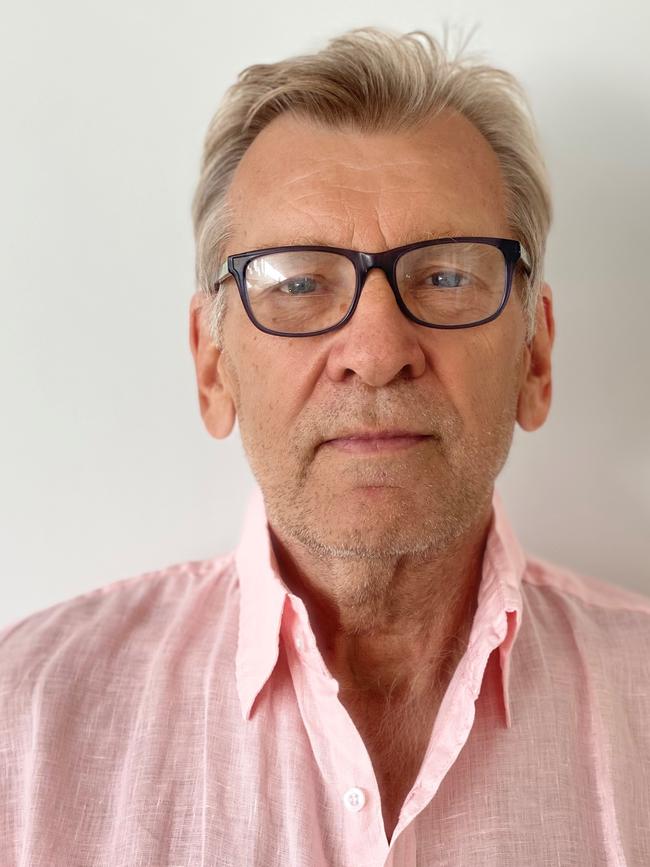
“When you also take into account that many immigrant families don’t arrive in Australia with a huge amount of wealth, the ability to pay for expensive industry pathway courses; to take low-paid (or unpaid) internships in expensive cities like Sydney or Melbourne; or even find the time to work on side projects that demonstrate creative thinking outside of full-time work and familial responsibilities simply isn’t possible,” Ms Chaudhuri said.
“This is also true of anyone from a disadvantaged background, which is why the advertising industry also lacks socio-economic diversity, as well as cultural diversity.”
In addition to a huge lack of awareness about what the advertising industry can even offer diverse communities, the ABC Gruen TV show panellist said many people didn’t know half the jobs in the industry existed, let alone be interested enough to apply for them.
“There’s a big job to be done to ensure we’re reaching diverse communities in diverse ways – ways that speak to them, in the places they inhabit. So far, we’ve done very little to address this,” she said.
Not only does the sector employ processes and parameters for recruitment that don’t cater to those who exist outside the homogeneity, she said LinkedIn and Facebook job ads could target people inside the echo chamber and request higher education mandates that didn’t take into account alternative or parallel learning experiences.
While the lack of cultural diversity in advertising has always been an issue, the climate in which it was possible to ignore it has changed. The nation is more multicultural than ever before, and this is a trend that is predicted to grow.
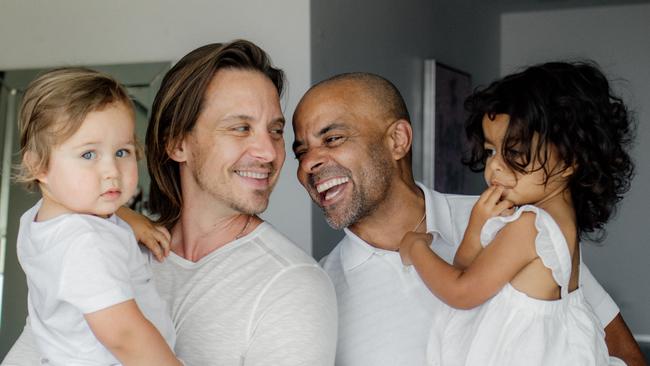
According to the latest census data, Australia is more culturally diverse than ever, with more than half (51.5 per cent) of people either born overseas, or with a parent born overseas. In contrast, according to Create Space, Advertising Council Australia’s recent census, every major ethnicity is significantly under-represented in the industry. This is particularly prevalent in senior positions.
“To drive business growth for our clients, we need to find ways to authentically access all audiences, not just a decreasing ethnic majority,” Ms Chaudhuri said.
Alongside this, she said sentiment had changed both inside the industry and with its audiences – particularly since 2020 when a global reckoning on race occurred following the death of African-American man George Floyd in the US.
To see the inaugural Destroy This Brief visit onlyoneintheroom.co/destroy-this-brief


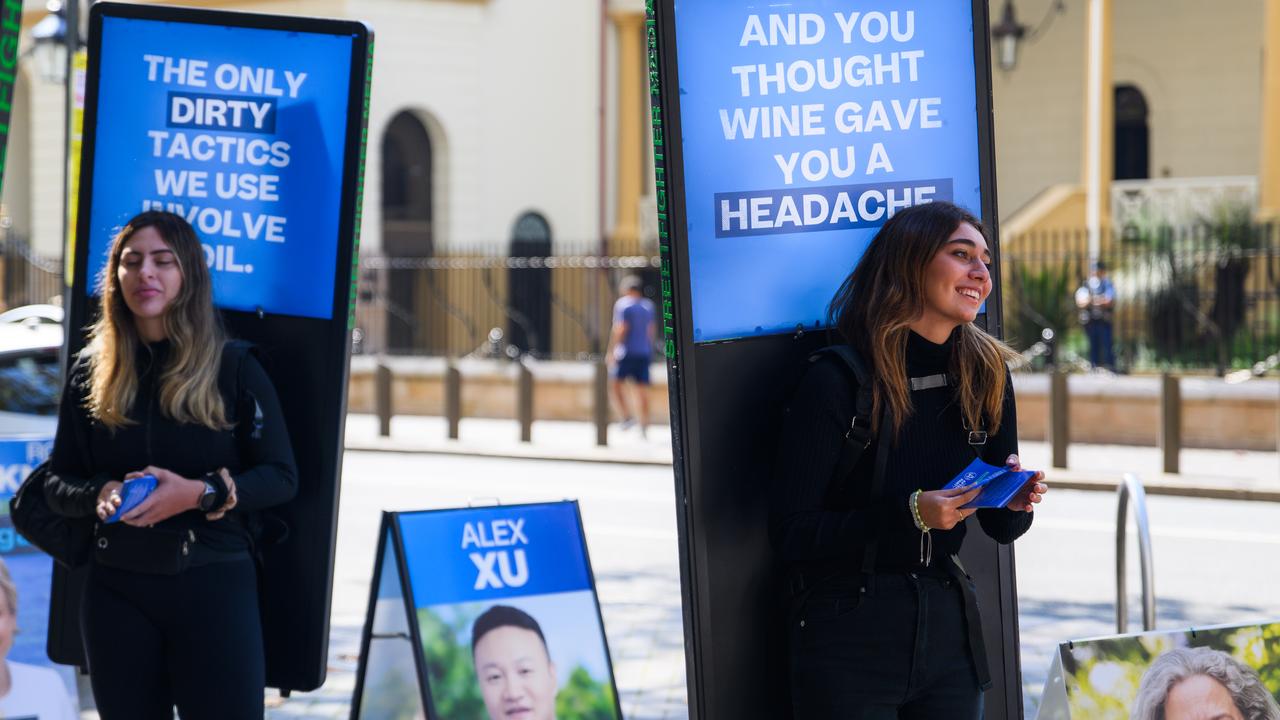
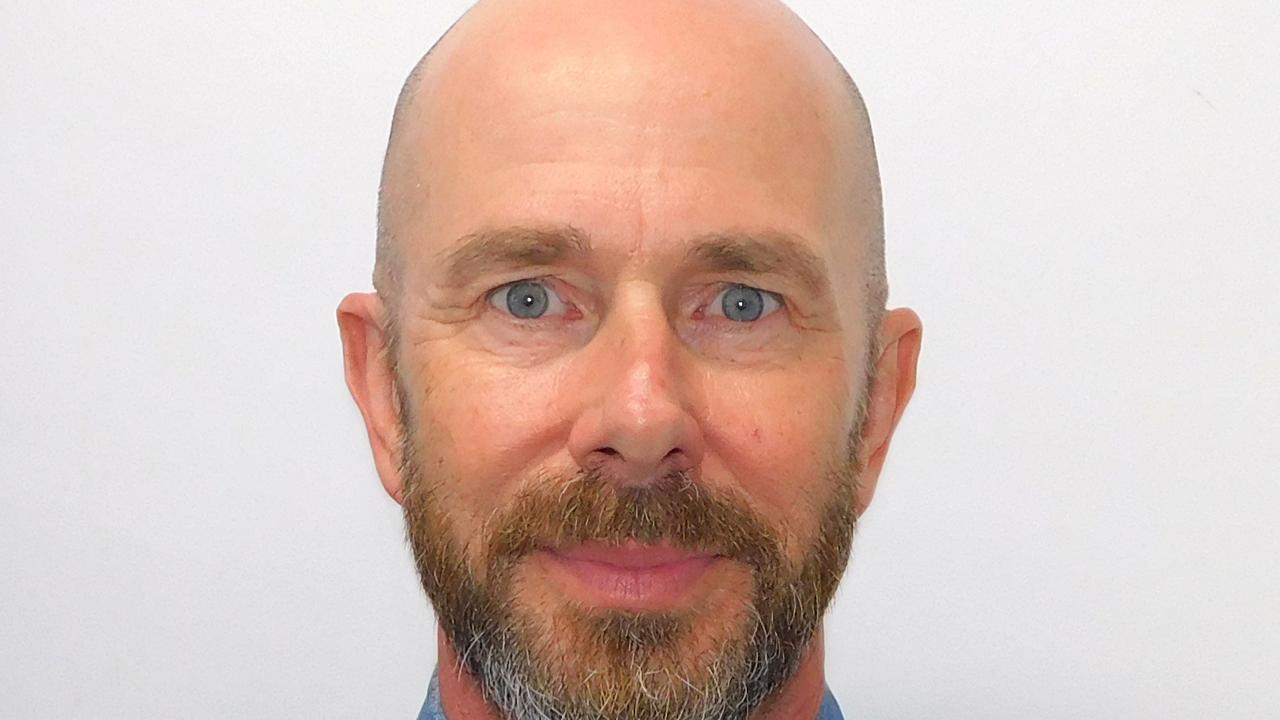
To join the conversation, please log in. Don't have an account? Register
Join the conversation, you are commenting as Logout